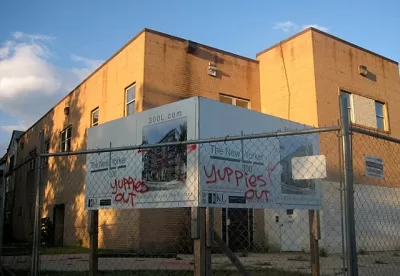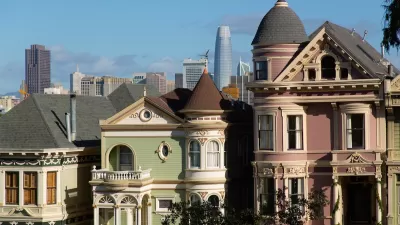The general principle is simple: more density equals lower prices and less environmental impact. But suburbia's imprint is deep, both on cities themselves and on how we expect to inhabit them.

In an article on Grist, Ben Adler doubts whether the urbanist trend will be enough to combat the ills of low density. Although urban populations are rising, "We're watching the demographics of cities change without getting the carbon-emissions-reducing benefits that the back-to-the-cities movement promised."
After decades of what we now consider underdevelopment, cities face chronic housing shortages. "Given that it's the capital of a country with twice as many people as in 1950, you wouldn't expect Washington to have shrunk, would you? Well, it has, and it hasn't fully bounced back."
And even though developers are steadily adding units, social factors stemming from the suburban boom are getting in the way. "D.C. doesn't suffer from a shrinking stock of housing. In fact, it has the most dwelling units in its history — it just has fewer people in each home [...] Middle-class Americans have simply become accustomed to more private space and comfort than previous generations."
Adler traces part of the problem to the racial and spacial vagaries of urban infilling. "In certain neighborhoods that have become trendy, high demand bids up housing prices, empty lots get filled in, and the population grows. In other neighborhoods, demand remains low and abandonment continues." Environmentalists (and some urbanists) want to fill in these empty spaces, only to confront inevitable gentrification and displacement as prices rise.
FULL STORY: Thanks to social change, urban density ain’t what it used to be

Maui's Vacation Rental Debate Turns Ugly
Verbal attacks, misinformation campaigns and fistfights plague a high-stakes debate to convert thousands of vacation rentals into long-term housing.

Planetizen Federal Action Tracker
A weekly monitor of how Trump’s orders and actions are impacting planners and planning in America.

San Francisco Suspends Traffic Calming Amidst Record Deaths
Citing “a challenging fiscal landscape,” the city will cease the program on the heels of 42 traffic deaths, including 24 pedestrians.

Adaptive Reuse Will Create Housing in a Suburban Texas Strip Mall
A developer is reimagining a strip mall property as a mixed-use complex with housing and retail.

Study: Anti-Homelessness Laws Don’t Work
Research shows that punitive measures that criminalized unhoused people don’t help reduce homelessness.

In U.S., Urban Gondolas Face Uphill Battle
Cities in Latin America and Europe have embraced aerial transitways — AKA gondolas — as sustainable, convenient urban transport, especially in tricky geographies. American cities have yet to catch up.
Urban Design for Planners 1: Software Tools
This six-course series explores essential urban design concepts using open source software and equips planners with the tools they need to participate fully in the urban design process.
Planning for Universal Design
Learn the tools for implementing Universal Design in planning regulations.
Heyer Gruel & Associates PA
JM Goldson LLC
Custer County Colorado
City of Camden Redevelopment Agency
City of Astoria
Transportation Research & Education Center (TREC) at Portland State University
Jefferson Parish Government
Camden Redevelopment Agency
City of Claremont





























